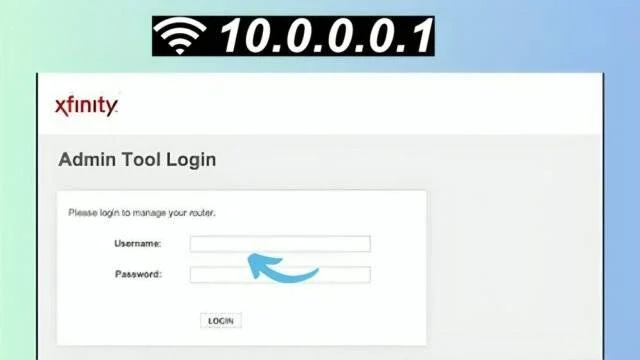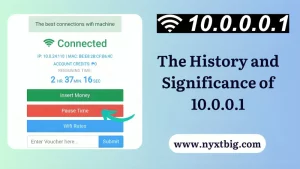
If you’re someone trying to log into your Piso WiFi router and you tried typing 10.0.0.0.1 Piso WiFi Time in your browser, you may have quickly realized that it doesn’t work. That extra zero creates an invalid IP address. So what gives? Why is the common gateway IP 10.0.0.1 and where did this mysterious 10.0.0.0.1 Piso WiFi Time come from? I decided to do some sleuthing to get to the bottom of this WiFi mystery.
Turns out, 10.0.0.0.1 isn’t even a real IP address. All IPv4 IP addresses can only contain four octets ranging from 0 to 255, not five. So while 10.0.0.1 is valid and commonly used as the default gateway IP for routers, 10.0.0.0.1 breaks the IPv4 numbering rules. This clever imposter IP had me fooled for longer than I’d like to admit!
The Looming IPv4 Apocalypse
Now, you might be wondering why we need these private network IP ranges at all. Why not just assign public IPv4 addresses to every device?
Well, here lies another key part of this WiFi mystery – we are unfortunately running out of publicly routable IPv4 addresses globally! There are only around 4 billion available IPv4 addresses in total. Now that the internet has grown massively, that limited pool is almost fully allocated. This shortage is known as the IPv4 address exhaustion crisis.
So by using private IPs like 10.0.0.0.1 Piso WiFi Time instead of public IPs wherever possible, we can put off this impending doom a little while longer. It’s buying us some extra time to slowly transition to the more spacious IPv6 address format before all hell breaks loose!
The History and Significance of 10.0.0.1

With the veil lifted from 10.0.0.0.1 we want to discuss about the genuine thing – it is widely known as 10.0. Why is the strange situation of this particular address so common that both routers and modems actively resort to it more often than not?
Okay, 10.0.0.1 is assigned to a private block of IP addresses (block starting with 10 contains eight digits) that may be repurposed more than once on the local level without causing conflicts within the electronic routing system. This makes it ideal for the setting of ‘ipDefaultGateway’ interface parameter to be a default gateway for consumer routers. The 10.0.0.0/8 network provides enough IP address space for nearly 16 million addresses each private network that uses it, catering for further growth as well!
Therefore, for the times that you set up new routers, modems or access ports, most likely using 10.0.0.1 as its management IP address is inevitable. Using this address, you can navigate to the admin console that lets you fine-tune configurations of your network. It is like a gateway least seen in the back of your control panel.
How to Access Your Router at 10.0.0.0.1 Piso WiFi Time
If you want to access your own network’s gateway configuration page, just open a new browser tab and navigate to http://10.0.0.1. Here are the step-by-step instructions:
- Ensure your computer is connected to your home or office network either via WiFi or preferably an Ethernet cable for the most reliable connection.
- Launch any web browser on your computer and type exactly http://10.0.0.1 into the address bar. Do not type an extra zero!
- Hit enter and you should see your router or modem’s administration login page. There may be a security warning, but do not fret. Just proceed to the login form (in most cases, just clicking “Advanced” then “Proceed” will work).
- Enter your admin username and password to access your network settings. If prompted, the default is often just username = admin and password = admin or password. Refer to your device documentation for specific default credentials.
- Once logged in to the 10.0.0.1 gateway IP, you’ll have full control to configure your home network connection details. Enjoy and use your newfound WiFi superpowers responsibly!
Wait, Can I Set My Router to Use 10.0.0.0.1?
Good catch! No, unfortunately due to the strict dotted-decimal formatting of the IPv4 protocol, you cannot set any device’s IP address to the non-existent 10.0.0.0.1. Bummer!
However, you are free to change your router’s gateway IP address to another valid private IP address from the 10.0.0.0/8 CIDR range. For example, you could set your router to use 10.0.4.1 or 10.240.1.4 if you really felt like it.
Just don’t get too carried away though or you might forget what you set it to later. Stick to easy memorable numbers just in case! I’d steer clear of anything too wild like 10.183.12.237 unless you’re absolutely certain you’ll remember that.
Conclusion
Well, there you have it folks – the complete backstory on the infamous default router IP address 10.0.0.0.1 Piso WiFi Time and just why it’s so critical to modern networking. We also exposed that sneaky imposter 10.0.0.0.1 that had me second-guessing reality there for awhile.
I don’t know about you, but I’m going to think fondly of ol’ 10.0.0.1 now every time I log into my router’s admin console. It really does silently power and facilitate so much of our everyday internet use. Here’s to you, little gateway IP! Stay golden.
And if you ever run into networking issues, remember to double-check that trusted backdoor admin page at 10-dot-0-dot-0-dot-1 before you panic or call the ISP. There’s a good chance you can troubleshoot and resolve many connectivity problems yourself with just a few clicks in that beloved interface.
Now get out there and optimize your home network to your heart’s desire! But be careful not to bork any crucial settings
Faqs About 10.0.0.0.1 Piso Wifi Time
Ans: Yes, it is a valid IP address that can be used as a default gateway or local client IP address.
Ans: You can log in to your router’s admin panel by typing “10.0.0.1” into your browser’s address bar and entering the default username and password provided by your router manufacturer. Once you’re logged in, you can change your password.
Ans: To pause your Piso Wi-Fi connection, go to the “Connection” tab on the Piso Wi-Fi portal and click on the “Pause” button. You will then be prompted to select a duration for the pause.
Ans: There is no specific way to pause Chrome 10.0 0.1 Piso Wi-Fi. You can pause your Piso Wi-Fi connection by following the steps mentioned in the previous answer.
Ans: To use Piso Wi-Fi, connect to the “Piso WiFi” network from your device’s Wi-Fi settings. Once you’re connected, you can open your web browser and start browsing the internet.
If you want to read more content like this then visit https://circasd.com



